Supporting 500 Students and Closing the Mentoring Gap


One in three young people grows up without a mentor outside their family. Dr. Derald Davis, assistant superintendent of Kansas City Public Schools (KCPS), refers to this as the mentoring gap in America.
Hallmark aimed to impact that gap in urban education in 2018 by launching Lunch Buddies to connect students to a support system. Nearly 30 Hallmark employees of varying backgrounds acted as mentors during the lunch hour to provide guidance, encouragement and friendship to elementary school students.
As KCPS’ first corporate partner, Hallmark leveraged previous community experience to help develop and structure the new program. Based on the success of the initial program, KCPS implemented Lunch Buddies in 18 elementary schools throughout their district in August 2018, increasing the overall impact of the program to provide one-on-one mentorship to 500 children.
“Hallmark has been a terrific partner,” Davis said. “Through this program, we’ve seen a true impact and spurred interest throughout the district. The Lunch Buddies program is better because of Hallmark’s involvement. Students with mentors return to class happier, feel encouraged and supported, and engage with the teacher and other students in a positive manner.”
Teachers see firsthand the value the program brings. One teacher saw improvement in her student’s behavior since the student was matched with a Hallmark Lunch Buddy and another affirmed that her students are more engaged when they know they will see their lunch buddy every week.
“Our goal is to be a positive role model and motivate these kids to stay in school,” said Andrea Gomez, corporate contributions manager of the Hallmark Corporate Foundation and a Hallmark Lunch Buddy. “We lift them up in any way we can,” she added. In 2019, KCPS has rolled out Lunch Buddies to additional corporate partners and individuals in the Kansas City community to benefit even more students.
“To date, the Lunch Buddies program is making a difference in our community,” Davis said. “Mentees have shown increased school attendance, improved grades and improved behavior. We are optimistic about the future of the program based on what we’ve seen so far and expect to see more great results at the end of the year.”
Read more in Hallmark’s Caring in Action Social Responsibility Report.
Previously published in the 3BL Media newsroom.
Image credit: Hallmark
The Democratic Debates Have Overlooked Water, Though It Absolutely Matters to the Economy
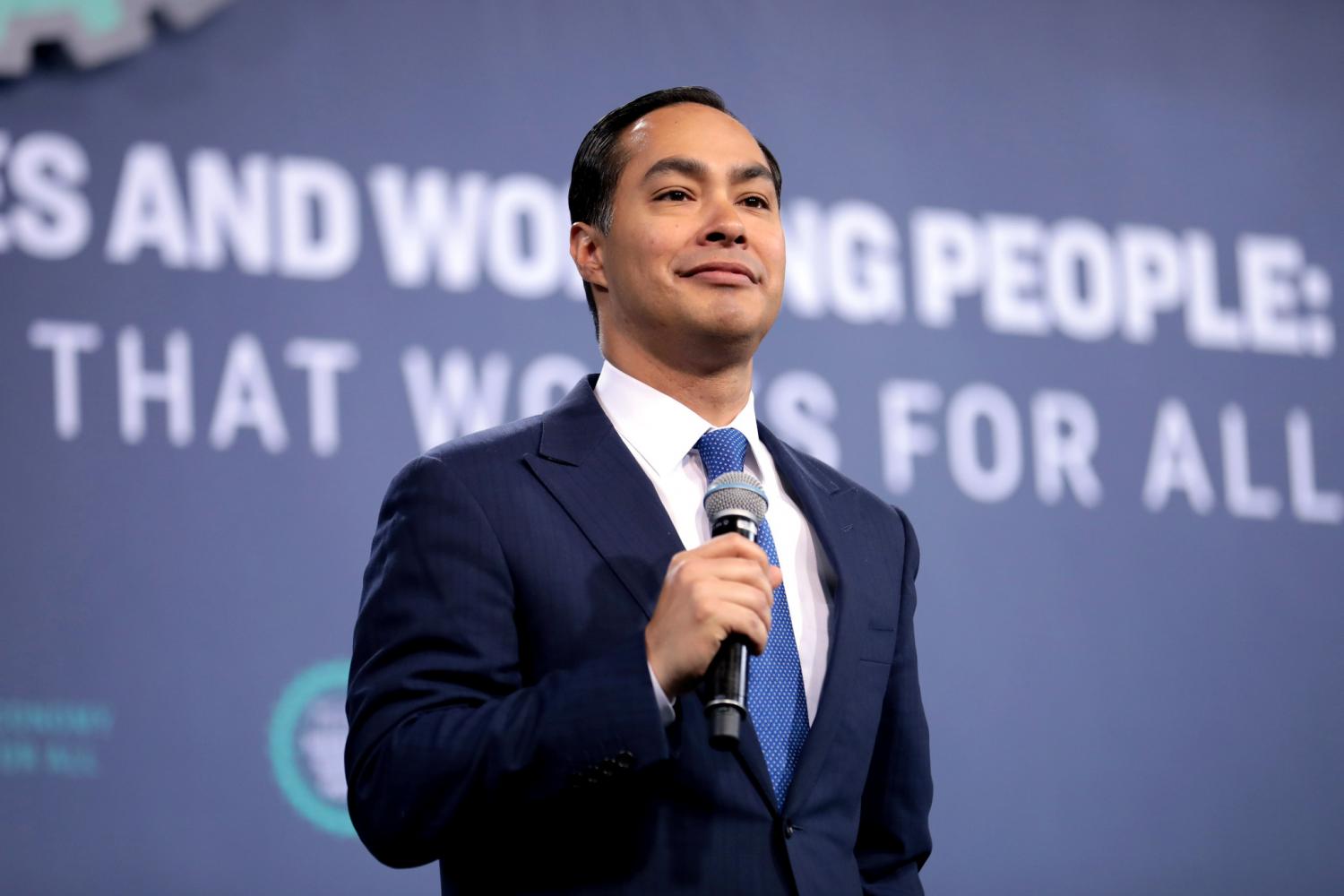
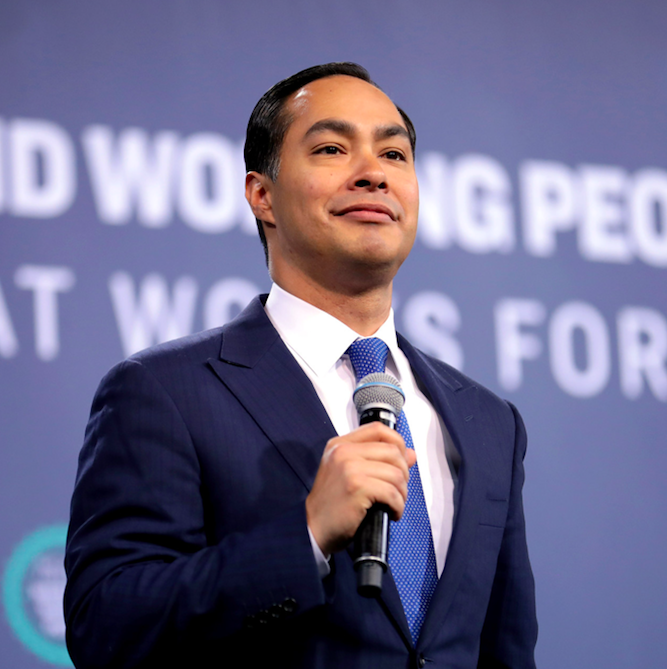
Tonight, the 10 leading Democratic candidates take the stage for a debate, the third in the cycle. Each one of them has been busy over the past few months releasing their climate plans, and they all participated in the recent seven-hour long marathon climate town hall. There is a lot of overarching similarity between most of the plans (Andrew Yang, as in a many policy areas, is a bit of an outlier with his stances on geoengineering and nuclear energy), but only a few lay out details relating to water.
Here’s where Joe Biden, Cory Booker, Pete Buttigieg, Amy Klobuchar, Julian Castro, Kamala Harris, Beto O'Rourke, Bernie Sanders, Elizabeth Warren and Andrew Yang stand:
- All the candidates talk about water in the context of resilience, such as natural infrastructure (restoring wetlands, for example) and hardening infrastructure. Biden, Booker, Buttigieg, and Klobuchar keep their plans there.
- Castro (pictured above) lays out plans to strengthen the Clean Water Act, fully funding water programs, and combating pollution and runoff from industry and agriculture. His plan specifically calls for updated flood maps and improving flood protection standards. This was a huge issue post-Hurricane Harvey in his home state of Texas.
- Harris states that clean water is a fundamental human right. She proposes improving water infrastructure, affordability, and clean water. Her plan includes a Water Justice Act to ensure sustainable water supplies.
- O’Rourke’s plan includes research and development priorities and funding for water infrastructure.
- Sanders lays out a plan to address crumbling infrastructure, including a green infrastructure jobs corps, and includes several plans for environmental justice initiatives related to water (every candidate has an environmental justice or affordability component to his or her plan, as well as a jobs plan).
- Warren make no specific reference to water in her plan, other than to note that everyone deserves access to clean water.
- Yang throws some climate science in, noting that the southwestern United States, in particular, will suffer more extreme droughts, and proposes the creation of a “Climate Change Adaptation Institute” that will continually monitor and propose solutions for urban planning, agriculture, and land use, especially during droughts. He also notes support of water recapture and talks about sustainable infrastructure.
It should be noted that the renewable energy or net-zero emissions plans that each candidate has will have a significant impact on water, as our traditional fossil fuel-based energy portfolio is incredibly water intensive.
So, why is water so important in this discussion? For one thing, 93 percent of climate change impacts will be felt in the water sector, according to the Intergovernmental Panel on Climate Change. Droughts and floods have already become more of an issue for every sector of the country: cities, agriculture, industry. Cities that cannot manage their water will find fewer companies willing to locate there and bring employees. As demands on water sources increase, if businesses are not willing to reduce their demand, they may find themselves at the back of the queue in getting access. Smart water management is the key to sustainability in every sense of the word.
The real estate industry is one area that is already starting to feel the pinch. Put aside the issues with the real estate industry and sea level rise, some lakeside communities are already finding themselves high and dry. For example, as water infrastructure crumbles, a quasi-governmental river authority in Texas is draining lakes to ensure more damage is not caused when the dams fail.
Climate change is not a single issue, but many wrapped into one. Water is a key issue. Infrastructure, resiliency, water quality—these are all critical aspects related to water. It is imperative for the candidates to recognize that water flows through every aspect of our lives.
Plans should include intersectionality, not simply grouping things together. As a start, we need to give the water sector a role in renewable energy goals. We also need to increase technical support and funding for new business models for the water utility sector, which typically lags behind electric utilities when it comes to innovation. In the end, if water is not on the table for discussion, we may soon find it’s not available for drinking, either.
Image credit: Gage Skidmore/Flickr
Embrace Opportunity Employment to Build the Workforce of the Future


Last month, the Business Roundtable acknowledged the evolving role and purpose of business in the 21st century by updating its Statement on the Purpose of a Corporation. In it the CEOs of America’s leading companies argue, “The long-term success of these companies and the U.S. economy depends on businesses investing in the economic security of their employees and the communities in which they operate.”
We could not agree more.
We especially applaud the BRT’s explicit focus on employees as a critical facet of this new commitment. Of course, operationalizing on this new statement of purpose will be no small feat. As the impact of this far-reaching and potentially disruptive new outlook becomes clear, new questions arise. What does it actually look like for an employer to invest in their employees? How will BRT members and other like-minded employers measure success? How might stakeholders hold employers accountable in this updated worldview?
Successfully navigating this transition is critical because the nature of work is changing. Both workers and employers face the effects of globalization, shifting demographics, increasing automation, and a growing gig economy. While a forward thinking manager could anticipate one or some of these changes, no one should be expected to account for them all. The challenge then is to design and build new employment systems that confront today’s challenges while staying open to tomorrow’s.
In a time of growing economic inequality we believe that the workplace of tomorrow – the one that will be most competitive in attracting and retaining talent – is one where employers are providing economic dignity, creating good jobs, training their employees for new technological advances, and redefining the workplace experience for all employees.
This is what it means to be an Opportunity Employer. Opportunity Employers commit to the principles and practices of Opportunity Employment – principles and practices that prioritize economic opportunity and mobility for all workers and lead to increased retention, diversity, employee engagement and stronger performance for entry-level and frontline workers while generating business value for the company. In short, it’s about creating a workplace where people of all backgrounds are valued and can thrive.
Our organizations, Talent Rewire and Grads of Life, collaborated to define and publish the Opportunity Employment principles and practices that are simultaneously good for employees and the bottom line. Our framework builds on years of engaging with employers, and in partnership with a community of experts that includes B Lab, BSR, Generation, Good Jobs Institute, JUST Capital, National Fund for Workforce Solutions, Skillful, B Lab, JUST Capital, and many other leaders. In order to make these findings actionable and measurable, we created the Opportunity Navigator – a free, online tool that allows employers to assess their progress against the best practices of Opportunity Employment. The Navigator provides a customized scorecard with strengths and opportunities for additional impact, along with resources that can support employers in taking action.
We’ve taken these steps in part because we know how challenging it can be for employers to move from a commitment to employees to taking the steps needed to prioritize opportunity and mobility for all. We invite BRT members and their industry peers to join the Opportunity Employer movement. Taking the quick assessment to see how your company scores through the Navigator tool is a great first step.
No matter what the future economy holds for business and society, we know one thing is certain: the changing landscape of work requires companies to invest in their employees and ensure that each and every one of them has the opportunity to reach their full potential. We believe the best and most sustainable path forward to achieve this is by becoming an Opportunity Employer. In the end, the companies that embrace these practices will be at a competitive advantage.
To learn more about Opportunity Employment and how your company can empower employees, come explore the Opportunity Navigator.
Elyse Roseblum is Principal at Grads of Life. Nicole Trimble is Managing Director of Talent Rewire.
Previously posted in the 3BL Media Newsroom.
Image credit: Alex Kotliarskyi/Unsplash
The Path That Led to Amazon Employees Joining the Global Climate Strike
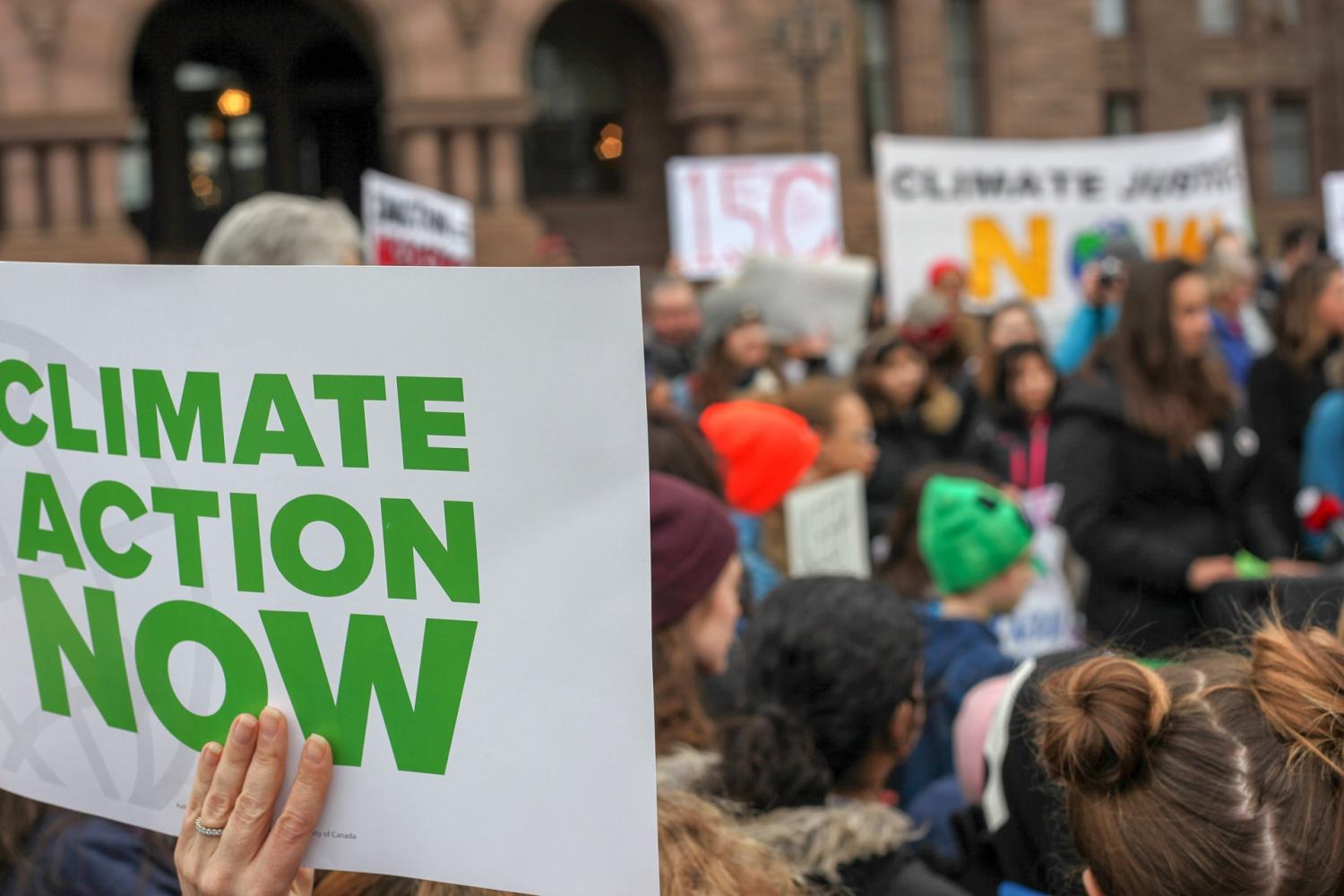
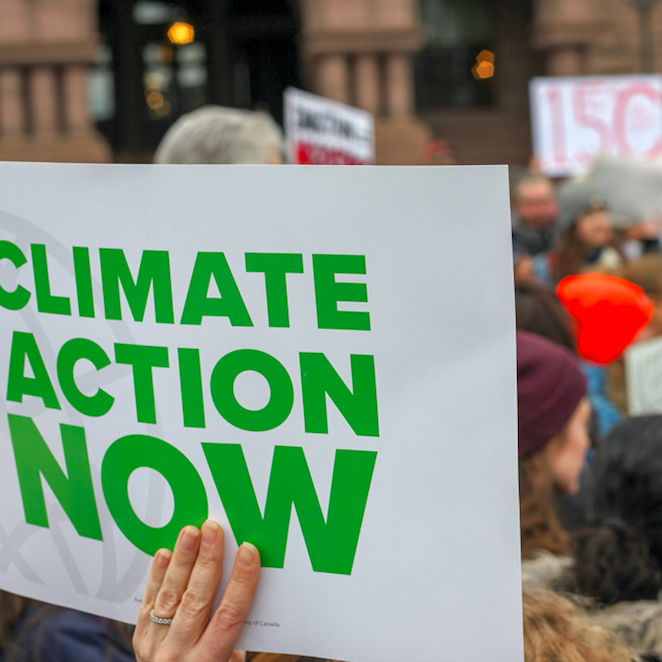
Workers at the Boston headquarters of the home furnishing company Wayfair raised the bar on employee activism earlier this summer, when they staged a street protest rather than settling for the now-familiar open letters to corporate leadership. At first it seemed like a one-off, but now employees at Amazon are prepared to take to the streets as well to join this month’s Global Climate Strike.
What happened in the weeks leading to the upcoming Global Climate Strike?
The Wayfair walkout marked a significant milestone in the employee activism movement. Although employee letters and petitions can attract some media attention, they do not have the visual impact of a street protest in the heart of a leading U.S. city.
Employees at Amazon may be following a similar trajectory. A group of workers has been lobbying the company to take a leadership role on climate change, and they are prepared to take it to the next level.
The vehicle for their protest is the upcoming Global Climate Strike on September 20.
The strike is supported by the #FridaysForFuture movement, sparked by Swedish climate activist Greta Thunberg in addition to other grassroots organizations.
Organizers of more than 2,500 events in 117 countries have already registered to join the Climate Strike. The group of Amazon employees may be unique, though, because they are apparently the only employee group from a leading company to join with the specific intent of calling attention to their employer’s climate policy.
The employee group Amazon Employees for Climate Justice posted a petition letter on Monday, September 9, detailing their case for joining the Climate Strike and calling for support.
By early Tuesday morning, 1,000 names were on the petition.
A call for climate leadership
While Thunberg and other activists call for government policy makers to step up and lead, the Amazon employees are focused squarely on their employer — and on themselves.
In an open letter published on Monday in Medium, the group made it clear that top executives at Amazon are not the only ones responsible for company policy.
“As employees at one of the largest and most powerful companies in the world, our role in facing the climate crisis is to ensure our company is leading on climate, not following,” the letter begins.
“We have to take responsibility for the impact that our business has on the planet and on people.”
The group does not let Amazon CEO Jeff Bezos off the hook, however.
They take Bezos to task for talking the talk on climate change, while engaging in business and politics that together promote the fossil fuel industry and its political allies:
“Amazon contributes directly to climate change through intensive use of fossil fuels throughout our businesses and pollutes communities with our fossil fuel infrastructure; we have custom solutions to help oil and gas companies accelerate extraction and exploration of new oil and gas reserves; we’re funding the premier climate denying think tank and we funded 68 members of Congress in 2018 who voted against climate legislation 100 percent of the time.”
Employee activism and brand reputation
The letter includes a series of detailed action steps aimed at reducing Amazon’s direct greenhouse gas emissions, cutting off contracts that accelerate oil and gas extraction, and zeroing out financial support for “climate denying lobbyists and politicians.”
That may seem like a tall order, but the employee group argues that Amazon is uniquely positioned to hit those goals. In fact, they appeal to the company’s own reputation as “one of the world’s most innovative companies.”
They argue that the climate crisis is an opportunity to reach the zero emissions goal ahead of the pack, “not one who slides in at the last possible moment.”
They also bring up their influence on other companies:
“…a company with the innovation, boldness, and resources of Amazon should be at the forefront of driving this transformation of our economy that the climate crisis requires. A commitment from Amazon has the power to move industries. Investment by the company in electrified aviation or maritime shipping would be a game-changer.”
In concluding their case, the employees point to their achievements so far in terms of developing a “a massive logistics network that achieves speed,” and they call for the company — and themselves — to “put at least that kind of effort, innovation, and multi-year dedication into achieving zero-emissions logistics.”
Another milestone for employee activism
If the Amazon group follows through on their walkout plans, it could mark another milestone in employee activism, in which workers emphasize their own complicity in corporate operations that they disagree with.
In some ways, that trend is already evident. Earlier this year, for example, a group of employees at the powerful public relations firm Edelman reportedly convinced their firm in private conversations to drop a contract with the prison firm Geo Group, after they refused to work on that client's projects.
Last month a group of Google employees ratcheted up that approach by taking their case straight to the public. Instead of waiting for corporate leadership to engage in a contract, hundreds of employees signed a petition pledging not to work on potential business with the U.S. Customs and Border Patrol or any other federal agency associated with human rights abuses.
If the Amazon group inspires other employees to join a street protest, the Google group could be next in line.
Image credit: Jasmin Sessler/Pixabay
Fearless Girl: Voting Your Voice for Gender Equity Makes a Difference
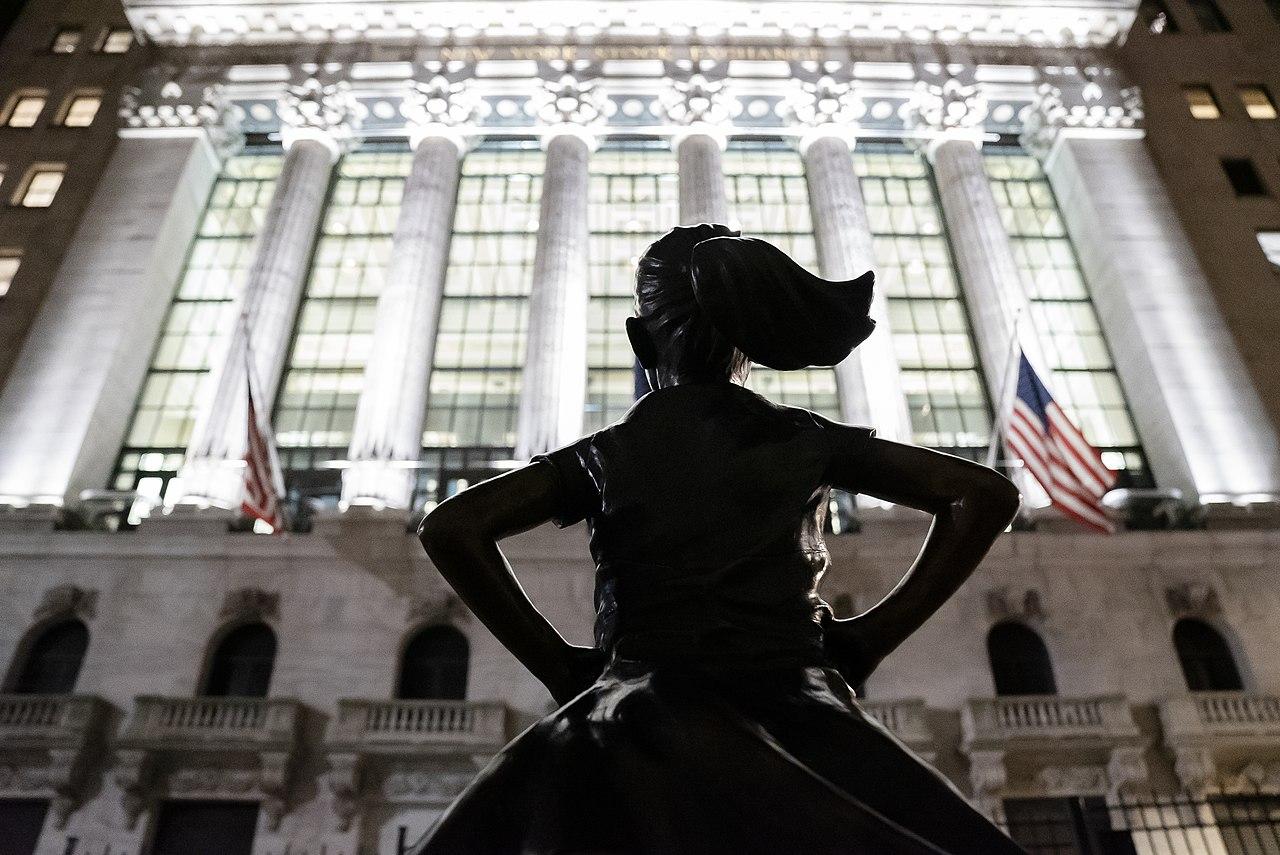
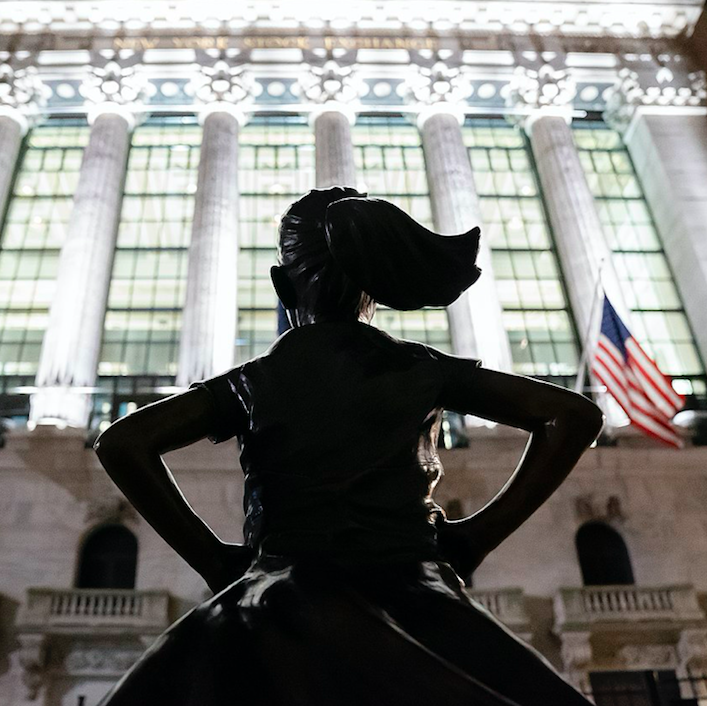
On the eve of International Women’s Day, 2017, New York’s Financial District was introduced to “Fearless Girl,” a four-foot bronze statue of a girl with her hands on her hips, resolution on her face and wind in her hair.
State Street Global Advisors (SSGA), the world’s third largest asset manager, commissioned the piece as a symbol for their initiative to bring more women to leadership roles, especially on corporate boards. Two years later, the financial firm has outlined the results of its initiative in its 2019 Annual Stewardship Report.
The report doesn’t only quiet skeptics that would assume the statue was an empty corporate ploy; it also shows that investment firms can make a tangible difference with their voice and voting power.
In 2017, SSGA reached out to 1,357 companies — amounting to about 70 percent of the equity assets the firm manages — that lacked female representation on their corporate boards. As of June 30, 43 percent of those companies have added a female director. That amounts to 577 companies. Six more have committed to doing the same.
Was the statement behind Fearless Girl enough to move the needle?
State Street did more than install an inspiring statue to achieve these results. They had to engage the chosen companies in conversations, and when necessary, vote against the chair of businesses that did not taken adequate action to add a female board member.
The firm has taken voting action against 667 companies thus far.
“Unlike their active manager colleagues, index portfolio managers don’t have the luxury of selling companies they think are adding risk to the portfolio,” Rakhi Kumar, Senior Managing Director and Head of ESG Investments and Asset Stewardship, says in a 2018 State Street article. “If a company is in the index, we own it. So our job is to identify areas of concern or opportunity, and help companies to act on them.”
Kumar added, “We do that through a constructive engagement process: When companies fail to take action we will use our proxy voting power to bring about change.”
Most conversations with companies have been positive, according to Kumar, but some took a turn for the worse. She recalls a company leader saying, “So you want a woman? We’ll give you a woman.” The company didn’t comprehend the bigger picture — that diverse perspectives are important, even good for business.
The benefits of diversity to business are well documented. A McKinsey Study found that companies with more gender diverse executive teams outperformed their competitors by 21 percent in profitability and by 27 percent in value creation. And companies that opted out of diversity were 29 percent less likely to achieve above-average profitability.
State Street has been nuanced in its engagement with its companies, beginning by understanding how the companies view diversity and whether they are open to having a conversation. If a company shows it is open, the investment firm proceeds with the company’s data — what they collect and how they are using it.
Other investors are speaking out and demanding data
Data collection and transparency show that a company cares about diversity. That data is essential for investors to understand the companies they buy into.
The state of equity and diversity data is dismal amongst Fortune 500 companies. To get a better picture of their assets, some investors have recently taken a stand for more transparency. While SSGA may have been the first large U.S. asset manager to take action on gender diversity, it is far from the last.
Ninety-nine investors (as of June) have signed a disclosure statement, asking companies to publish data on workplace equity policies and practices. Like State Street, these investment firms understand the role diversity plays in profit.
Workplace equity is not a piece of cake
Achieving workplace equity and diverse leadership will not be easy. State Street itself faced a gender discrimination lawsuit in late 2017, ending in a $5 million settlement. If anything, this shows the road will be long.
While SSGA is expanding its stewardship in 2020, it will not abandon Fearless Girl. In its third year, State Street plans to tackle the 57 percent of its companies that have not yet taken action on gender diversity. The firm is stepping up its reprimands by voting against the entire nominating and governance committees of companies that lack action and productive dialogue.
Productive dialogue can start a chain reaction. Kumar describes one such situation in a State Street article. In Houston, a real estate investment trust “wrote us a letter informing us that they had added a woman to their board and that our input had helped shape their board refreshment process and discussions.”
Investment firms have inordinate power to change business landscapes. State Street’s Fearless Girl is showing the difference this power can make when it is used for value-based stewardship.
Image credit: Billie Grace Ward/Wiki Commons
Some Bottom-Line Sense, Finally, On Gun Safety


Last week, the floodgates on gun safety opened after Walmart declared that gun owners were no longer welcome to carry their weapons openly in its stores, even in states that broadly permit open carry. The announcement could have been just another one-off, with no wider impact. Instead, several other major U.S. retailers quickly followed suit. So, what changed?
Retailers turn up the heat on gun safety
The latest wave of announcements on shopper safety began on September 3, when Walmart announced a new policy on open carry in a public letter to its employees. Also on that date, Kroger also revoked what had previously been a more permissive open carry policy.
Other companies quickly followed suit with new policy announcements of their own, including CVS, Walgreen’s, Wegmans, Meijer and Albertson’s.
Last Friday, the politics blog The Hill ran a list of open carry policies at the top 30 leading retailers and noted that Costco also discourages open carry, in addition to Starbucks, Target, Texas-based H-E-B, and the Food Lion stores of parent company Royal Ahold Delhaize.
Companies affirming “no gun restrictions” in response to inquiries from The Hill include TJX (TJ Maxx, Marshalls and HomeGoods), Macy’s and Aldi’s. The remaining stores on the list did not respond, with noted brands such as Amazon brick-and-mortar stores, Apple, Lowe’s, Best Buy and McDonald’s.
The building of a gun safety movement
The new cluster of policy announcements by retailers contrasts sharply with the fits-and-starts nature of previous efforts by companies to limit open carry in states that permit it.
Back in 2013, for example, Starbucks revoked its previous tolerance for open carry, and made a “respectful request” for gun owners to refrain from carrying guns in its stores.
There was little discernible follow up until the following year, when Target made a similar announcement. Target used the same “respectful request” language while summing up the shopper safety angle with this common sense observation:
"This is a complicated issue, but it boils down to a simple belief: Bringing firearms to Target creates an environment that is at odds with the family-friendly shopping and work experience we strive to create.”
Other major retailers were slow to follow suit, though by 2015 at least five restaurant chains also publicly discouraged open carry, including Whataburger, Chipotle, Panera, Sonic and Chili’s.
In 2016, Levi Strauss & Co. discouraged open carry in its stores by formal announcement, repeating the now-standard “respectful request” language.
Last year Levi’s also upped the ante by lending its muscle to grassroots gun control efforts. The company announced that it would partner with the group Everytown for Gun Safety, the umbrella organization for Moms Demand Action for Gun Sense in America.
Still, no other retailers drew media attention to their open carry policies until the new Walmart announcement.
Retailers turn up the heat on gun safety
Last week, TriplePundit conjectured that the rise of online shopping has made a key difference in the willingness of retailers to address gun safety in open carry states.
Shopper safety has always been a consideration for retailers, and the e-commerce trend has increased the pressure on brick-and-mortar stakeholders to ensure safe spaces for shoppers.
The e-commerce angle does not fully explain, though, why so many retailers have followed Walmart’s lead in recent days.
One additional factor could be the threat of legal action.
Regardless of state laws that broadly permit open carry, retailers may be held responsible for failing to take adequate steps to ensure shopper safety. That issue came up in a pair of lawsuits involving Kroger earlier this year, and that may have motivated other retailers to take preemptive action.
Brand reputation, activism and gun safety
Lawsuits draw unwanted attention, and that brings up another important factor, brand reputation.
Until very recently, brand reputation among retailers in open carry states was entwined with policies advocated by the National Rifle Association (NRA). Retailers risked public blowback when attempting to discourage open carry in their stores.
More recently, Moms Demand Action has challenged the NRA for the hearts and minds — and voting power — of residents in open carry states and elsewhere.
Concurrently with the rise of Moms Demand Action, the NRA has inflicted a good deal of damage on its own brand in recent months.
Those twin trends have provided retailers with far more wiggle room to adopt sensible gun policies that make shoppers feel safe in stores.
In a common sense world, the sight of a non-uniformed stranger carrying a gun into a store for no particular reason should be enough to send other shoppers walking toward the exits, if not racing out pell-mell in a panic.
By spreading that common sense message to millions of shoppers in their daily lives, retailers will play a critical role in de-normalizing state laws that broadly permit open carry, and help contribute to a legislative environment that brings public policy into agreement with public opinion on the rights and responsibilities of gun owners.
Image credit: Joanna Nix/Unsplash
CEOs Hail Business Benefits of AI, But Employees Remain Skeptical


In their rush to grasp the business benefits offered by artificial intelligence (AI) and machine learning, are companies missing the ethical risks in deploying these technologies? Evidence of that oversight abounds, not least in a recent study of 450 C-suite executives in which AI was viewed nearly exclusively from an opportunity lens.
Aside from a mention of cybersecurity as a threat, a recent report—Maintaining the Human Connection in an age of AI, from the consulting firm A.T. Kearney—showed 50 percent of executives who are looking at the adoption of new technology in the long-term selected AI and machine learning as their best opportunity, up from just 27 percent last year.
The absence of reflection on the ethical aspects of AI is all the more striking in light of the observation from Paul A. Laudicina, founder and chairman of A.T. Kearney’s Global Business Policy Council and co-author of the report, who said in a press statement that the results “suggest that the C-suite believes corporate social responsibility is shifting from an optional activity to a central requirement for successful corporate leadership.”
While they recognize new skills are needed in an age of automation, more than 90 percent of executives surveyed in the study do not anticipate a reduction in workforce size as a result of technological displacement—at least not in the next five years.
The benefits of AI bring new risks, along with opportunities
As they rush towards AI’s “game-changing potential,” as A.T. Kearney put it, CEOs would be wise to weave ethical considerations into their AI strategy, said Elaine Weidman Grunewald, co-founder of the AI Sustainability Center, a multi-disciplinary hub launched earlier this year to promote responsible and purpose-driven technology.
“AI will deliver undisputed revenue gains and dramatic cost-saving possibilities to companies,” Weidman Grunewald told TriplePundit. “What it will also deliver is a whole host of new risks, such as privacy intrusion, bias and discrimination. AI is different because it is self-learning and self-scaling, yet governance frameworks that address issues like transparency, explainability and accountability are lagging.”
The term “explainability” refers to machine learning techniques that make it possible for human users to understand, appropriately trust and effectively manage AI, as defined by the Harvard Business Review.
Without building and maintaining trust in an increasingly transparent era, companies embracing AI “may compromise all the benefits gained,” Weidman Grunewald noted.
Employees are still wary of AI
But while 85 percent of senior executives classify themselves as AI optimists, according to an EY study in May, the same survey revealed that employees may not be so keen. According to respondents, employee trust (33 percent) is one of the greatest barriers to AI adoption even though 87 percent of CEOs and business leaders completely or somewhat trust this technology.
One of employees’ more prevalent concerns is what has been called “snooptech,” the ability of employers to start using AI to monitor their employees. As Jeffrey Hirsch, a law professor at the University of North Carolina, Chapel Hill, recently reported in Fast Company, “Lots of workers are under automated surveillance from their employers.” Hirsch noted that such analyses could affect who is hired, fired, promoted or given raises. In addition, some AI programs can mine and manipulate data to predict future actions, such as who is likely to quit their job.
Can labor laws keep up?
Labor laws in the U.S. and other parts of the world have not kept up with technological advances and are not ready to deal with this new reality. In Sweden, however, the national Public Employment Service already has their eye on this issue. In a three-year partnership with the AI Sustainability Center, the agency is working to ensure that that their increasing use of AI in job matching and other services is done in a way that accounts for societal risks early in the process.
“As a public-sector agency, the stakes are high and being a first mover will be crucial in maintaining public trust,” says the AI Sustainability Center’s other co-founder, Anna Felländer.
Both policymakers and companies will have to step up their game in including social and ethical considerations in the use of AI. As 3p has reported, a growing number of companies are taking note and action to mitigate the risk and, in the process, finding opportunities to offer solutions, including IBM, Microsoft, Google and Accenture which through its new Applied Intelligence practice recently launched the AI Fairness Tool.
“Today all companies have become data driven. Yet there is a huge maturity spectrum when it comes to understanding the risks and pitfalls of AI,” Felländer says. “Maintaining a human connection requires an in-depth understanding of how the use of AI can impact not just on the bottom line, but people and society. That impact can be both positive or negative, but understanding the impact enables you to take action and mitigate risks before they occur.”
Image credit: Gerd Altmann/Pixabay
From Goat to Zero: EV Redemption for Volkswagen with ‘Affordable’ ID.3 EV


Fans of the German automaker Volkswagen experienced a serious letdown almost exactly four years ago, when the company was forced to admit it had doctored the results of U.S. emissions tests for its diesel cars. Well, that was then. Now, the company is banking on zero-emission electric vehicles (EVs) to restore its brand reputation, and it is not cutting any corners.
A fresh start for a tarnished brand
Since last Friday, Volkswagen has rolled out a series of three announcements aimed at cementing its position as a global leader in the EV revolution.
The most recent announcement appeared on Monday, on the eve of the International Motor Show in Frankfurt, Germany, to introduce the company’s new ID.3 electric vehicle.
In the announcement, Volkswagen made it clear that the new car signals a fresh start in terms of the company’s corporate culture, right down to a new logo:
“This vehicle is the symbol of a new era for the brand," a company statement reads. "The ID.3 extends the Volkswagen offering as the first model of a completely new generation of pure electric vehicles—featuring zero local emissions, outstanding efficiency, and full connectivity. At the same time, the ID.3 reflects the realignment of the Volkswagen brand, and is also the first model with the new Volkswagen logo.”
It's also noteworthy that Volkswagen is focused on EV affordability. Though the ID.3 is not particularly cheap at a starting price of just under 30,000 euros (around US$33,000 at the current exchange rate), that is lower than the current average cost of a new car in the U.S., which hovers around the $36,000 mark.
The prospect of lower fuel and maintenance costs compared to diesel- and gas-powered vehicles can also help take the sting out of the sticker price, regardless of whether or not tax incentives are available.
Emissions transparency is part of the Volkswagen reboot
To round out its brand reputation do-over, Volkswagen was also careful to note that the ID.3 has “zero local emissions.” By specifying “local,” Volkswagen makes an important distinction between zero tailpipe emissions and emissions involved elsewhere in the EV supply chain. That includes emissions from power plants as well as emissions related to manufacturing and shipping.
By referencing the difference, Volkswagen could contribute to a broader public understanding of mobility’s carbon footprint. That transparency is a far cry from the company’s self-inflicted wounds as “dieselgate” unspooled in the fall of 2015. Though Volkswagen was far from the only company to be accused of tampering with emissions test results, it bore the brunt of public wrath from the U.S. Environmental Protection Agency (EPA).
Kickstarting the EV revolution
Volkswagen expects the ID.3 to launch in Europe in limited quantities next year. In the meantime, the company is building a new high-volume EV battery factory in Salzgitter, Germany, to help scale up production in the years to follow.
Last Friday, Volkswagen announced that the new mobile energy storage venture will involve a partnership with the Swedish battery manufacturer Northvolt. The choice of Northvolt dovetails with Volkswagen’s decision to distinguish between local emissions and the rest of the EV footprint. Northvolt bills its lithium-ion energy storage platform as “the world’s greenest battery,” with a low manufacturing carbon footprint and “the highest ambitions” for recycling.
The new factory is expected to launch by the beginning of 2024.
Volkswagen preps for the EV revolution
A third announcement in the series, also released last Friday, covered Volkswagen’s soup to nuts, efficiency-based conversion of its existing Zwickau manufacturing facility from an all-internal combustion lineup to an EV-only lineup.
The conversion began in 2018 and is expected to be completed before 2021. With other production lines in addition to the ID.3, Volkswagen is billing Zwickau as Europe’s “largest and most efficient electric vehicle plant,” partly due to a high degree of automation.
The Zwickau location also supports Volkswagen’s efforts to reduce its carbon footprint beyond vehicle emissions. The Marienthal sector of Zwickau has been selected for an energy transition study involving heat pumps, energy storage and solar power, as well as EV charging.
As further evidence that Volkswagen is shedding its diesel past, the company anticipates that 33 models based on its new EV platform will commence production in the next three years, as the first group in a wave that will eventually total 70 EV models over 10 years. That will add up to 22 million new EVs on the road from Volkswagen alone.
Those scaled-up numbers are badly needed if the global transportation sector is to decarbonize. Last November, for example, the Edison Electric Institute (EEI) estimated that there were only 1 million EVs operating on U.S roads in 2018. The organization also anticipates that EVs will still account for only 7 percent of cars and light trucks in the U.S. by 2030.
In light of the new Volkswagen announcement, it looks like EEI and other industry watchers may need to revise their outlook in a more optimistic direction.
Image credit: Volkswagen
Industry Leaders Discuss Whether Sustainable Fashion is Possible


Can the fashion industry ever really be sustainable? Five industry leaders recently came together to make the case of how sustainability could become a reality within the world of fashion. These industry leaders shared their expertise on the risks and opportunities associated with a more sustainable fashion industry, and how various actors can play their part. There has been a lot of talk about the idea of sustainability in fashion over the last several years. It’s clear to apparel companies, however, that now is the time to dig into the tactics of how sustainability can be better identified, measured and benchmarked.
Fashion’s global impact is massive, and not always in a good way
Sustainability has become a buzzword over the last several years for good reason. The climate crisis, for one, is undeniable—and the fashion industry is a major contributor to the problem. The apparel industry is now valued at over $1 trillion, accounts for 2 percent of the world's GDP, and is believed to employ more than 1 in 10 of all workers globally. And as a leading United Kingdom sustainability news site recently reported, the apparel industry accounts for a tenth of the world’s annual carbon emissions, 5 percent of global water use, and has been identified as one of the sectors with the highest risk of modern slavery in supply chains.
Fast fashion is often seen as the culprit—retailers like H&M, Zara and Forever 21 (which is reportedly preparing a bankruptcy filing) have often been accused of perpetuating production practices that don’t support authentic sustainability in the industry. While the actual production of fashion is detrimental to the earth, consumer shopping patterns also continue to fuel the cycle. The truth of the matter is: Shoppers are buying more and more clothes—and the outlook doesn't look promising. According to the 2018 State of Fashion report from McKinsey and Business of Fashion, more than half of all fast-fashion items that consumers purchase are thrown away in less than a year.
Can fast fashion really evolve to become sustainable fashion?
Both H&M and Zara have been proactive over the last several years in developing strategies to become more sustainable and socially responsible brands. In 2016, H&M outlined an aggressive set of goals in its annual sustainability report, including a commitment to using 100 percent recycled or other sustainably-sourced materials by 2030.
Hendrick Alpen, H&M’s sustainability engagement manager, was among those who spoke out about the fashion industry’s ongoing evolution as he shared some insights on the progress the company has made around some of its initial goals. He insisted that becoming a 100 percent circular business is important to the Sweden-based company and explained what 100 percent circular would mean to H&M’s business:
“Creating a circular production module means ultimately coming to the point where we do not have to use virgin cotton or virgin polyester ... but actually use old garments as a resource, and recycle it into new products. We are investing heavily in that recycling technology.”
H&M now uses about 57 percent of materials that are organic, recycled or sustainably sourced cotton, Alpen said.
What apparel companies must do going forward
Apparel companies keep saying that they are looking to make changes, but such talk is not enough. To that end, these companies also discussed how genuine industry progress and government regulations together are key.
On the industry front, various tools are available to measure a company’s sustainability performance. The Higg Index is one such tool. Developed by the Sustainable Apparel Coalition, the Higg Index is a suite of tools that enables brands, retailers, and facilities of all sizes to accurately measure and score a company or product’s sustainability performance.
As for government involvement, China—which oversees the apparel industry’s largest production operation—is now focused on building a greener supply chain as part of the country’s five-year plan. In January 2019, the China National Textile and Apparel Council outlined its plan for “Technology, Fashion and Green” to address environmental issues.
If sustainability is to become the norm in the fashion industry, we’ll need to see more partnerships across all stakeholder groups and sectors. Brands, manufacturers, and governments must work together to deploy more aggressive goals and targets—and make them public in the interest of transparency and accountability.
With new advances in technology coming out every day, it’s equally as important to find innovative ways to disrupt the lifecycle of apparel, including developing next-generation processes that can turn old clothing into something new. If H&M or any of its competitors can crack the code that allows them to become 100 percent circular businesses, we’ll witness an industry that will set the bar for circularity high—and will motivate other industries to move quickly in order to keep up.
Image credit: Brunel Johnson/Unsplash
Most Of Us Are Waiting On the World to Change: You Don't Have to Be One of Them


This story is part of an editorial series featuring speakers, organizations and themes we will discuss in depth at the 2019 3BL Forum: Brands Taking Stands—What’s Next, a two-day event on Oct. 29-30 that delves into the "why" and "how" behind corporate responsibility. You can follow the series here.
Americans overwhelmingly agree that addressing social and environmental issues such as the United Nations Sustainable Development Goals (SDGs) is important to our future. New data released from a 2019 State of Conscious Consumer Study revealed that over 70 percent of U.S. adults feel that addressing public health, sustainable development, environmental issues and planet health, workplace quality, equal access to prosperity, and gender equality issues are important to the future. So, why aren’t they doing more to impact these issues?
The study revealed that only 23 percent of Americans actually believe in their individual impact, leaving 77 percent of U.S. adults feeling paralyzed amid a sociopolitical climate consumed by fake news, mega-companies funding political campaigns, and alarmist assessments of our planet and society’s health. This assumed inability to make change has led to a nation overcome by the “not it” or bystander effect, which can have dangerous consequences and keeps people’s desire to impact change merely that, a desire.
There are many ways that individuals can contribute to making an impact that, when compounded, will change the world. Walking or biking to work instead of driving, switching to energy-efficient light bulbs, unplugging your appliances when they’re not in use, purchasing organic or sustainable food products, replacing single-use plastics with reusable products, volunteering, raising awareness, or making donations are just some of the small, but impactful, ways individuals can make a difference.
But while lifestyle changes, volunteering and donating are all great ways to give back, they aren’t the only ways to support the causes you believe in. There is a way to drive progress and diversify your personal income for a sustainable future. Values-driven investing empowers people to make a difference by using investment dollars to support the change they want to see in the world.
The Conscious Consumer Study also found that 56 percent of U.S. adults believe investing in companies supporting the issues they care about is an impactful action that can drive progress, yet 1 in 4 believe they don’t have enough money or information to take action.
To address this issue, providers are paving the way for individuals—regardless of income levels—to take the future into their own hands and really make a difference. In a world that skews negative, new solutions are addressing the bystander effect and creating transparency to modernize the way we approach investing, especially for those that are just getting started. At COIN, we are fulfilling this ambition by laying out a path for a more conscious-led investing strategy. Our platform allows consumers to choose from varying impact areas—such as Clean Water to Better Health—that align with the United Nations Global Goals for sustainable development and invest in a custom portfolio of companies that make an impact in those areas.
By investing with their values, individuals can send a clear and powerful message that companies making a positive impact on the world appeal to consumers, now and in the future. Environmental scientist David Suzuki once said, “In a world of more than 7 billion people, each of us is a drop in the bucket. But with enough drops, we can fill any bucket.”
Individuals can take change into their own hands by using their voice, time and money. With these new solutions making values-driven investing more available and affordable than ever before, we do not need to remain paralyzed.
We must believe in the power of compounding individual behaviors if we want to see true progress and positive global, societal impact. Let’s become a country of conscious consumers— because with enough drops, we can fill any bucket.
Megan Schleck, co-founder and CEO of COIN, is among the speakers who will take the stage at the 2019 3BL Forum. Together, 80-plus speakers promise this two-day event one that is fast-paced, high-octane and invaluable with their perspectives on the latest in the environmental, social and governance (ESG) community.
We’re pleased to offer TriplePundit readers a 25 percent discount on attending the Forum. Please register by going to the 3BL Forum website and use this discount code when prompted: NEWS2019BRANDS.
Image credit: Emma Matthews/Unsplash